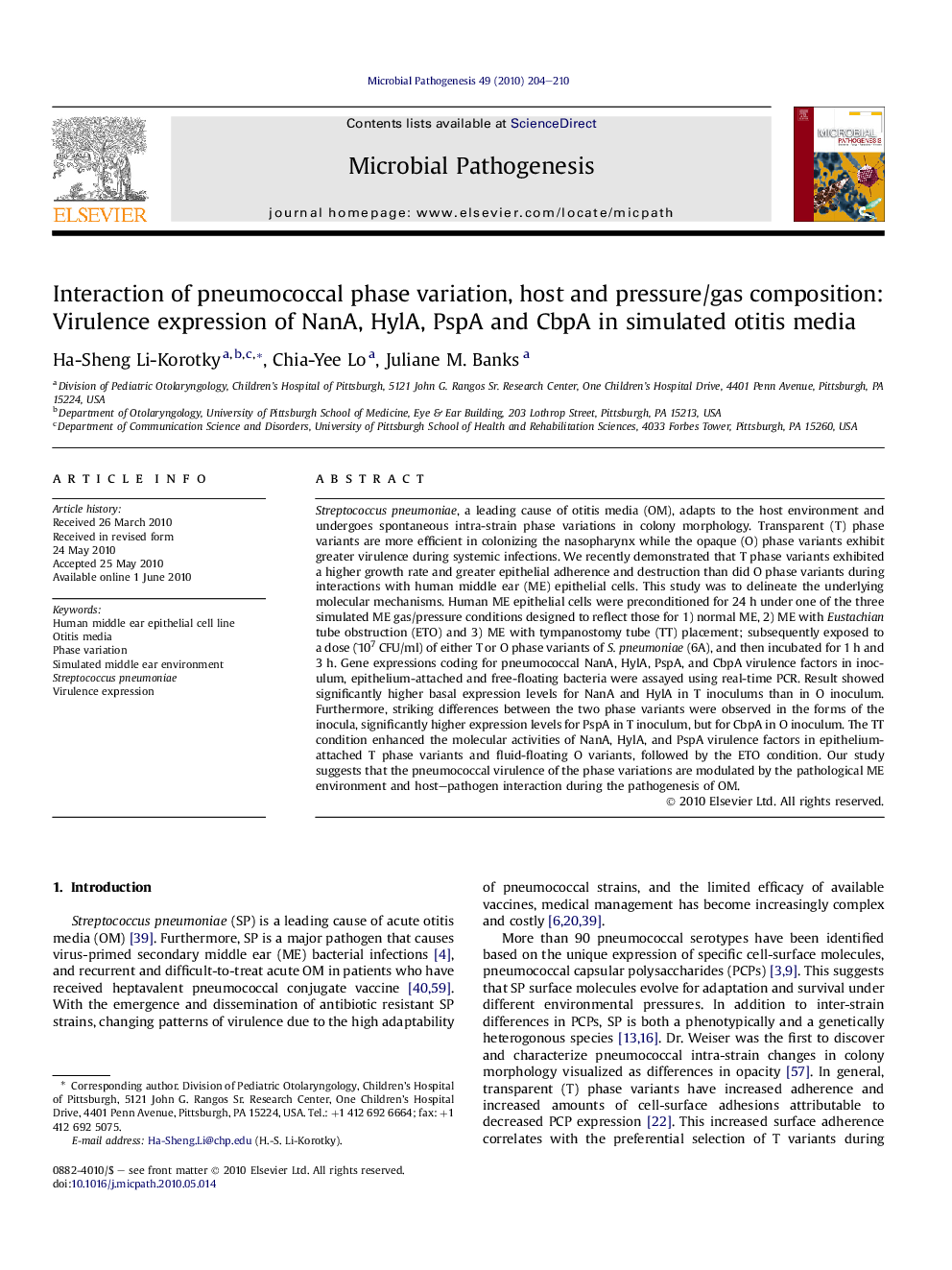| Article ID | Journal | Published Year | Pages | File Type |
|---|---|---|---|---|
| 3416950 | Microbial Pathogenesis | 2010 | 7 Pages |
Streptococcus pneumoniae, a leading cause of otitis media (OM), adapts to the host environment and undergoes spontaneous intra-strain phase variations in colony morphology. Transparent (T) phase variants are more efficient in colonizing the nasopharynx while the opaque (O) phase variants exhibit greater virulence during systemic infections. We recently demonstrated that T phase variants exhibited a higher growth rate and greater epithelial adherence and destruction than did O phase variants during interactions with human middle ear (ME) epithelial cells. This study was to delineate the underlying molecular mechanisms. Human ME epithelial cells were preconditioned for 24 h under one of the three simulated ME gas/pressure conditions designed to reflect those for 1) normal ME, 2) ME with Eustachian tube obstruction (ETO) and 3) ME with tympanostomy tube (TT) placement; subsequently exposed to a dose (˜107 CFU/ml) of either T or O phase variants of S. pneumoniae (6A), and then incubated for 1 h and 3 h. Gene expressions coding for pneumococcal NanA, HylA, PspA, and CbpA virulence factors in inoculum, epithelium-attached and free-floating bacteria were assayed using real-time PCR. Result showed significantly higher basal expression levels for NanA and HylA in T inoculums than in O inoculum. Furthermore, striking differences between the two phase variants were observed in the forms of the inocula, significantly higher expression levels for PspA in T inoculum, but for CbpA in O inoculum. The TT condition enhanced the molecular activities of NanA, HylA, and PspA virulence factors in epithelium-attached T phase variants and fluid-floating O variants, followed by the ETO condition. Our study suggests that the pneumococcal virulence of the phase variations are modulated by the pathological ME environment and host–pathogen interaction during the pathogenesis of OM.
